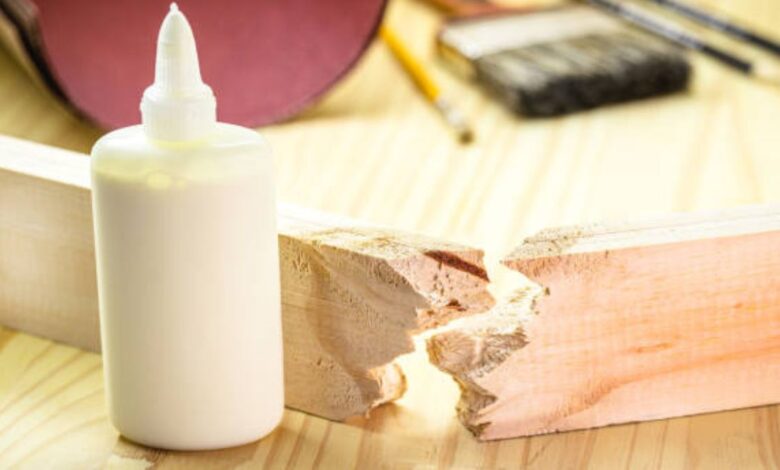How Long Does Wood Glue Take to Dry? Tips for Faster Bonding

When you’re working on a woodworking project, one question often looms large: how long does wood glue take to dry? Whether you’re crafting furniture or fixing up an old piece, understanding the drying time of your adhesive can make all the difference. You want that perfect bond without waiting around for hours on end. The good news is that with just a bit of knowledge about wood glue and its drying process, you can speed things up significantly. Let’s dive into the world of wood glue and explore what affects its drying time, so you can get back to creating sooner rather than later!
Understanding Wood Glue and Its Drying Process
Wood glue is a specialized adhesive designed to bond wooden surfaces. Its formulation typically contains polyvinyl acetate (PVA) or polyurethane, which work effectively in various woodworking applications.
When applied, wood glue penetrates the fibers of the wood and forms a strong mechanical bond as it dries. The drying process involves evaporation of moisture from the glue, allowing it to harden.
Different types of wood glue have distinct drying mechanisms. For instance, PVA glues dry through moisture loss while polyurethane adhesives cure by chemical reaction when exposed to moisture in the air or wood itself.
Understanding this process helps you manage your project better. Knowing how long each type takes can save time and frustration during assembly, ensuring that every joint is secure before moving on to further steps.
Factors Affecting Drying Time
Several factors can influence how long wood glue takes to dry. Temperature plays a significant role; warmer conditions typically speed up drying, while cooler temperatures slow it down.
Humidity also affects the bonding process. High humidity levels can prolong drying time as moisture interferes with the adhesive’s effectiveness.
The type of wood you’re working with matters too. Porous woods absorb more glue, which may extend drying time compared to less absorbent varieties.
Application thickness is another critical factor to consider. A thick layer of glue takes longer to set than a thin one because it has more volume that needs to cure.
Air circulation around your project can enhance or hinder drying times. Good airflow helps evaporate moisture faster, leading to quicker adhesion and stronger bonds overall.
Types of Wood Glue and Their Drying Times
There are several types of wood glue, each designed for specific applications. PVA (polyvinyl acetate) glue is the most common choice for woodworking projects. It typically dries within 30 minutes to an hour, but full curing can take up to 24 hours.
Another popular option is polyurethane glue. This type offers a strong bond and is waterproof, making it ideal for outdoor projects. Polyurethane glue generally takes longer to dry—about one to two hours—but expands as it cures.
Epoxy glue stands out due to its versatility and strength. While it can set quickly in about 5-20 minutes, depending on the formulation, achieving maximum strength may require a full day or more.
Hide glues provide traditional craftsmen with reliable adhesion. They usually dry relatively fast within an hour but also depend on environmental conditions for optimal results.
Tips for Faster Bonding with Wood Glue
For faster bonding with wood glue, preparation is key. Start by ensuring that the surfaces to be glued are clean and dry. Dust or oil can slow down the drying process.
Applying the right amount of glue also matters. Too much glue can lead to longer drying times, while too little won’t create a strong bond. A thin, even layer works best.
Clamping your pieces together will significantly speed up adhesion. Use clamps to hold them firmly in place for at least 30 minutes, depending on the type of wood glue you’re using.
Temperature plays a role as well; warmer environments typically facilitate quicker drying. If possible, work in an area where temperatures range between 70°F and 80°F (21°C – 27°C).
Consider using accelerators specifically designed for certain types of wood glues. These products can drastically reduce waiting time without compromising strength.
Common Mistakes to Avoid When Using Wood Glue
One common mistake is applying too much glue. Excessive amounts can lead to messy joints and longer drying times. A thin, even layer usually works best.
Another error is not clamping the pieces together adequately. Without proper pressure, you risk a weak bond that may fail over time.
Using old or improper glue also causes issues. Always check expiration dates and ensure you’re using the right type of wood glue for your project.
Failing to prepare surfaces properly can hinder adhesion. Make sure to clean and sand the wood before gluing for better results.
Impatience can be detrimental. Rushing into testing or moving glued pieces before they’re fully dry often leads to frustration and rework later on. Taking your time will pay off in sturdier results.
How to Test if the Glue is Fully Dry
Testing if wood glue is fully dry requires a bit of patience and careful observation. Start by checking the surface of the glued area. It should feel firm to the touch, with no tackiness remaining.
You can gently apply pressure at the joint. If there’s any movement or shifting, it likely needs more time to cure. For added assurance, look for a change in color; many adhesives turn from glossy to matte as they set completely.
Another method involves tapping lightly on the glued piece with your finger. A solid sound indicates that it has dried properly, while a dull thud may suggest it’s still curing.
Remember that each brand and type of glue varies in its drying characteristics. Always refer to manufacturer guidelines for specific recommendations tailored to your project’s needs.
Conclusion
Understanding Wood Glue and Its Drying Process Wood glue is a staple in woodworking projects, offering strong bonds for various materials. But how long does wood glue take to dry? The answer isn’t straightforward. It depends on several factors, including the type of wood glue used and the conditions where you apply it.
When applied, wood glue goes through a drying process that involves evaporation of moisture and chemical bonding between surfaces. This can vary significantly based on environmental conditions such as humidity and temperature.
Factors Affecting Drying Time Several elements influence how quickly your wood glue will set. Humidity can slow down drying since moisture in the air affects evaporation rates. Higher temperatures typically speed up drying but may also cause the adhesive to cure too fast without allowing enough time for adjustments.
The thickness of your application matters too; thicker layers take longer to dry compared to thin ones. Additionally, airflow around the glued area can either facilitate or hinder drying times – good ventilation helps!
Types of Wood Glue and Their Drying Times Various types of wood glues are available in the market today, each with its unique properties and drying times:
1. **PVA Glue (Polyvinyl Acetate)**: Commonly known as white or yellow school glue, PVA takes about 30 minutes to an hour before it’s ready for light handling but reaches full strength after 24 hours.
2. **Polyurethane Glue**: Known for being waterproof, this type usually requires clamping for 1-2 hours but cures fully within 24 hours.
3. **Epoxy**: This versatile adhesive often sets within 5-20 minutes depending on formulation; however, it achieves maximum strength after several days.
4. **Hide Glue**: Traditional hide glues might require up to an hour before they’re tacky enough for use but can take much longer when cold temperatures are involved.
Tips for Faster Bonding with Wood Glue If you’re looking to accelerate your project timeline while using wood glue, consider these helpful



